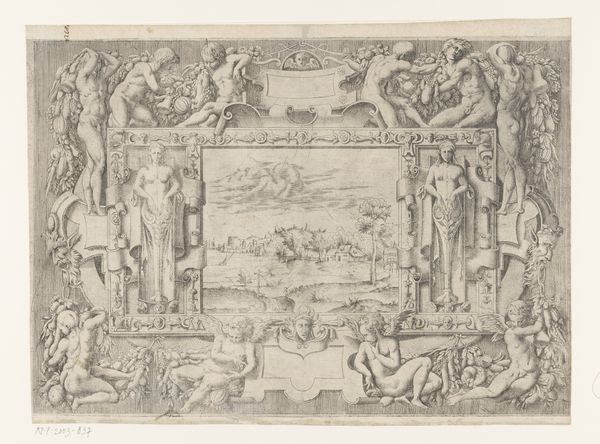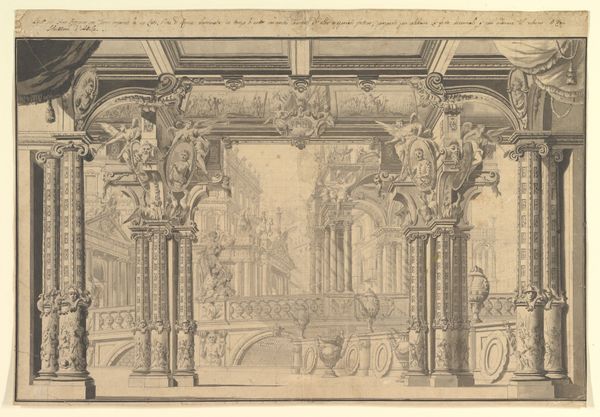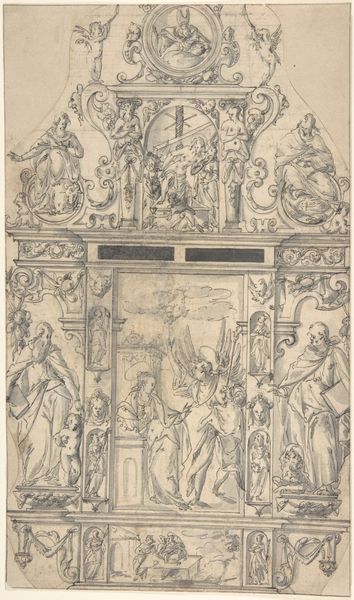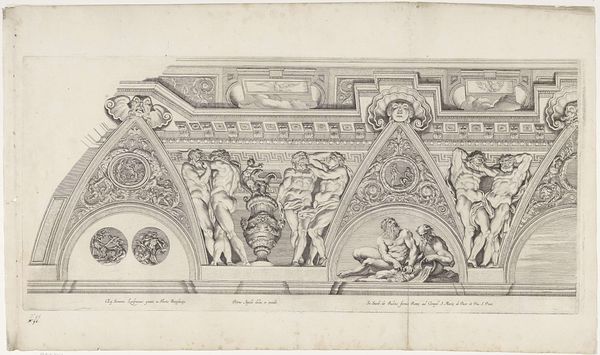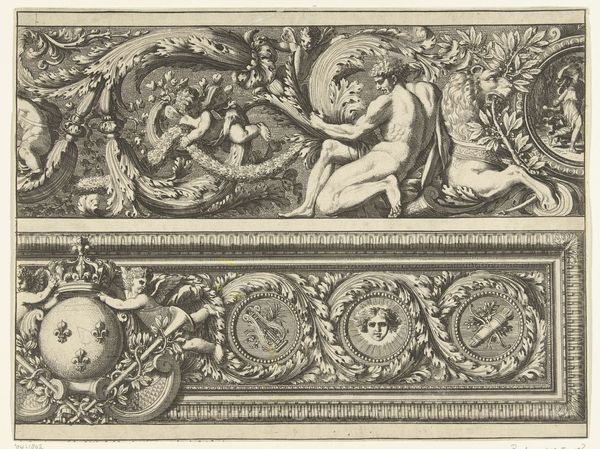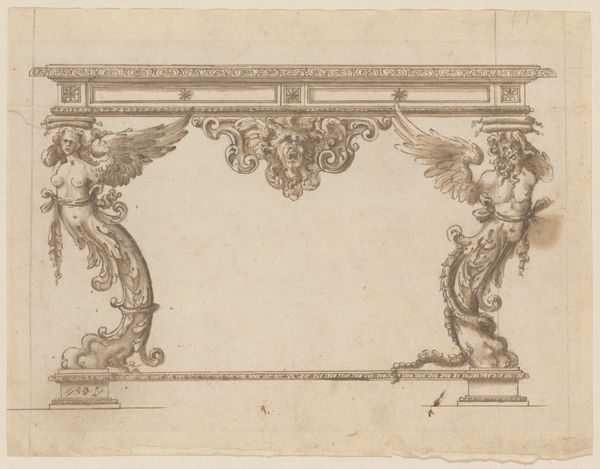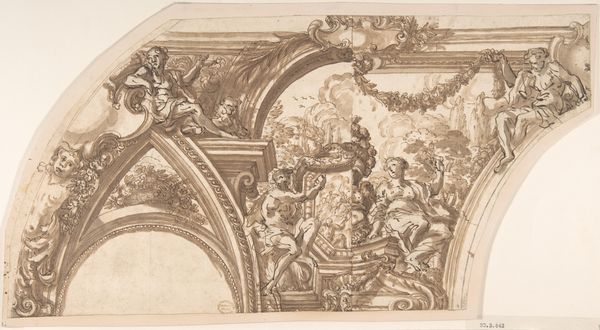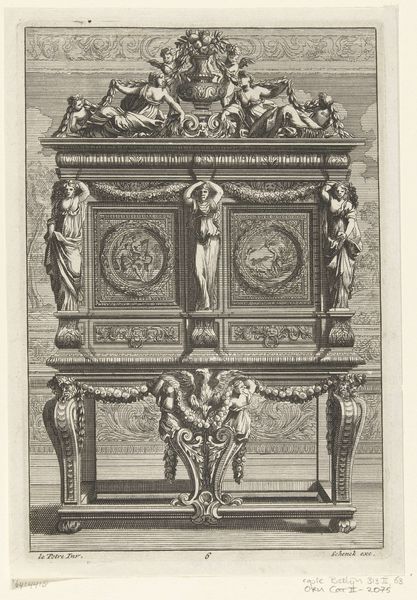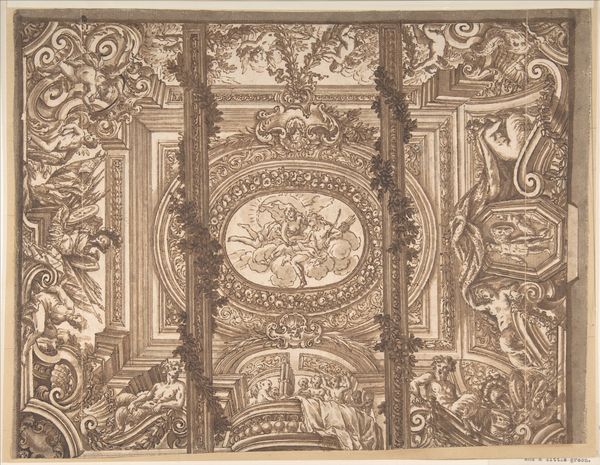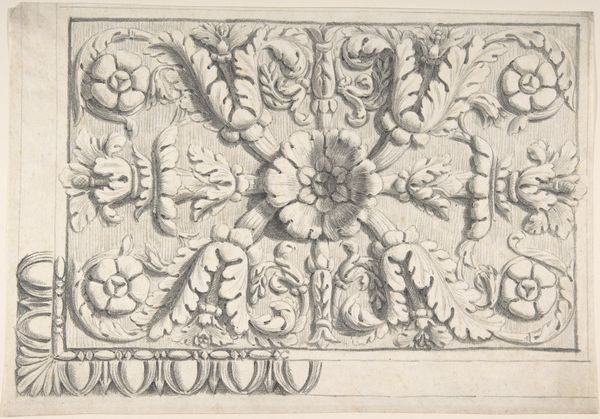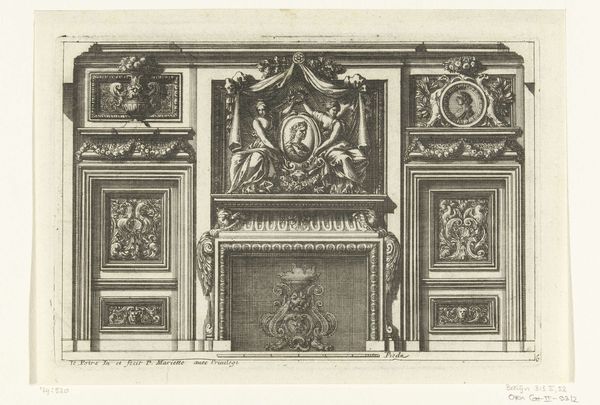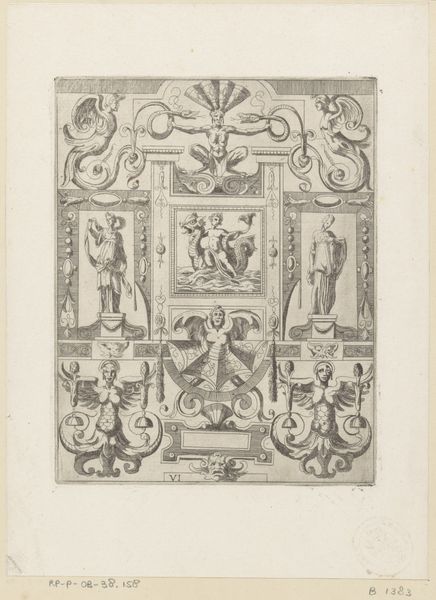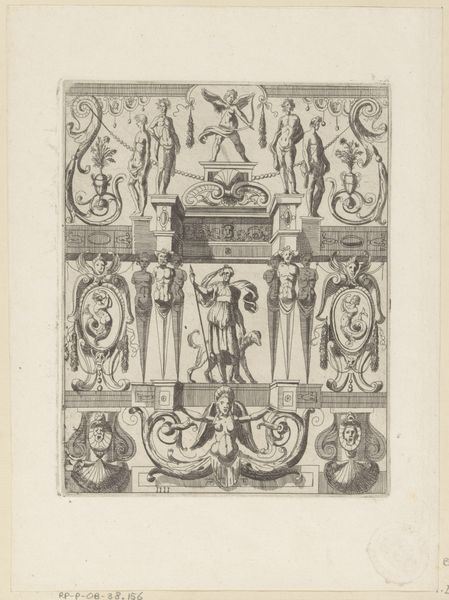
Grafmonumenten van de Heilige Firmus, Homodeus en Valentina 1708
0:00
0:00
drawing, print, sculpture, engraving
#
drawing
#
baroque
# print
#
figuration
#
sculpture
#
history-painting
#
engraving
Dimensions: height 206 mm, width 323 mm
Copyright: Rijks Museum: Open Domain
Curator: What a fascinating print! This is Jacob Andreas (I) Fridrich's "Grafmonumenten van de Heilige Firmus, Homodeus en Valentina," dating back to 1708, a baroque engraving detailing the monuments of saints. The level of ornamentation is astounding. Editor: It feels incredibly formal, almost like a theatrical set design. Those statues above the sleeping figures...they strike a very specific pose, evoking the drama of martyrdom, even if it feels strangely distanced by the cool, linear precision of the engraving itself. Curator: Notice how the print is organized into three distinct sections, each dedicated to a different saint. Above each saint, we see them standing, almost like statues, beneath draped curtains. Editor: Right, that layering is so telling. You've got this very public, idealized representation literally elevated above their actual physical repose. And those figures beneath – they're not peacefully sleeping, they are displayed, vulnerable. It’s about the performance of piety and the often brutal realities faced by those challenging authority, isn’t it? How power dictates even our eternal images. Curator: The iconography is carefully constructed. Each saint holds particular symbols associated with their martyrdom. This use of symbol speaks to the very architecture of collective religious understanding and their role within history. Editor: And looking at these representations through a contemporary lens, I find myself thinking about the narratives we choose to immortalize. These saints, certainly, held radical convictions, but I wonder what voices were erased or actively suppressed during their era. Are we truly remembering history or simply perpetuating power structures through selective remembrance? Curator: Indeed, and the scale, too, adds to its power. This wasn’t meant to be a small, intimate devotional piece, but rather a statement of belief and allegiance for a much broader audience. It uses visual shorthand. Editor: The baroque loved that kind of spectacle. What interests me, ultimately, is how these historical figures and their symbolism become potent resources for social and political statements long after their death. What meanings might these saints hold for viewers facing oppression today? Curator: A powerful point. This print provides much more than historical documentation, it reflects the continuing dialogue that imagery creates through the passage of time. Editor: It is in understanding this ever shifting dialogue through symbolic representations that a powerful discourse of contemporary history is built and informs action.
Comments
No comments
Be the first to comment and join the conversation on the ultimate creative platform.
